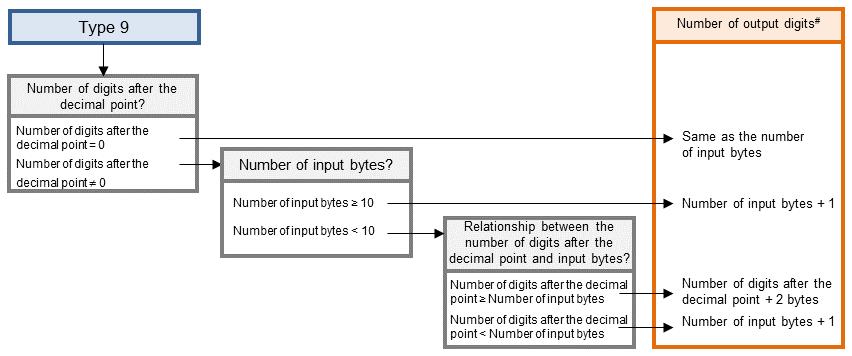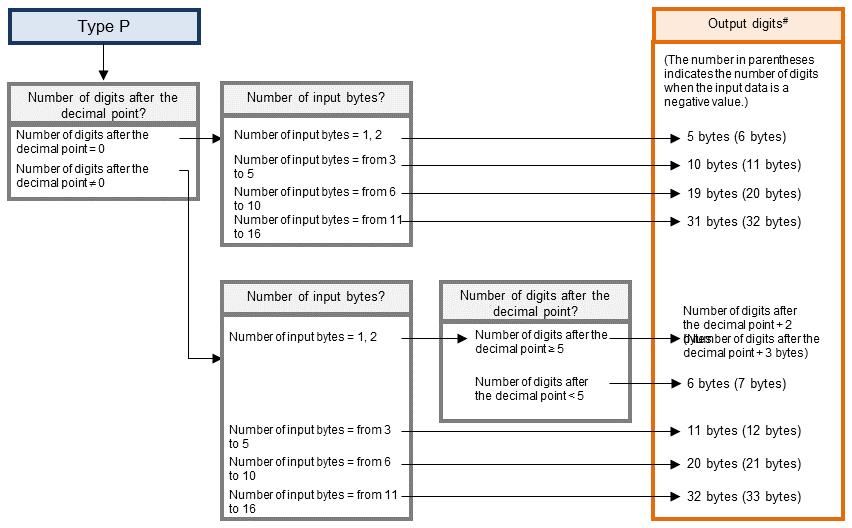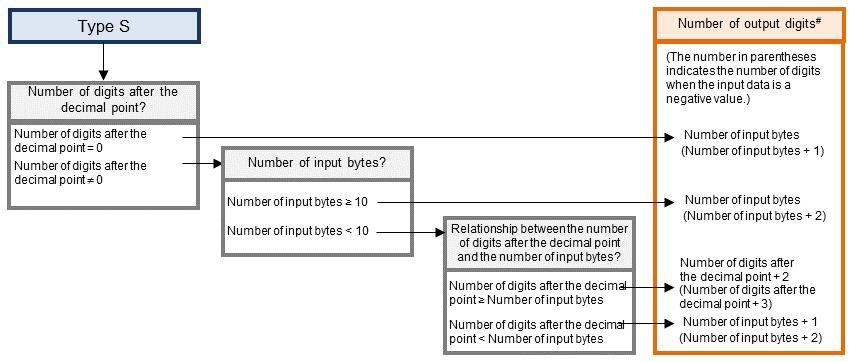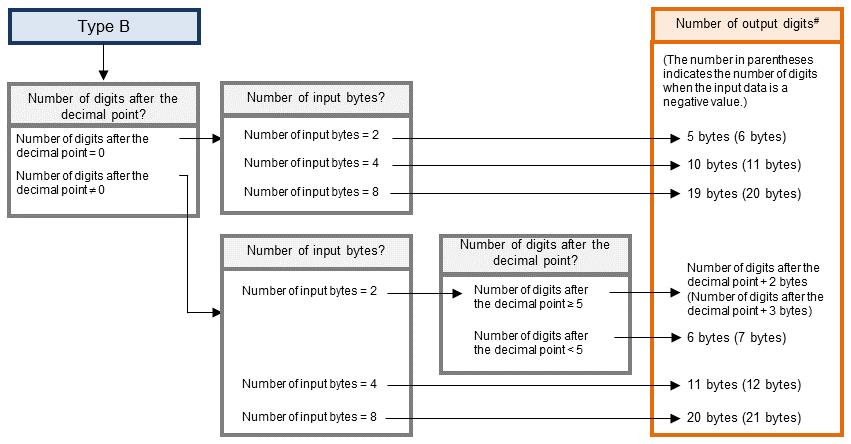Notes on digits after a numeric value is converted into character data
A conversion from a numeric value type to a character type (type X or type M) is performed as shown below. Refer to the following figures and prepare a sufficiently large size on the output side.
-
If Digits after Decimal Point for the input field is set to be larger than the number of bytes for the input data, leading zeros and a decimal point are added to fill the difference (for example, when Digits after Decimal Point is 5 and the input data is "123", the result will be "0.00123").
-
If the input data is a negative value, a minus sign (-) is added.
The numbers of output digits in the figures below contains these additions.

Figure 9.5 Input data is type 9

Figure 9.6 Input data is type P

Figure 9.7 Input data is type S

Figure 9.8 Input data is type B

Figure 9.9 Input data is type F

Figure 9.10 Input data is type Z
#: If the encoding is converted to UTF-16, the byte count of the output digits will be two times larger.